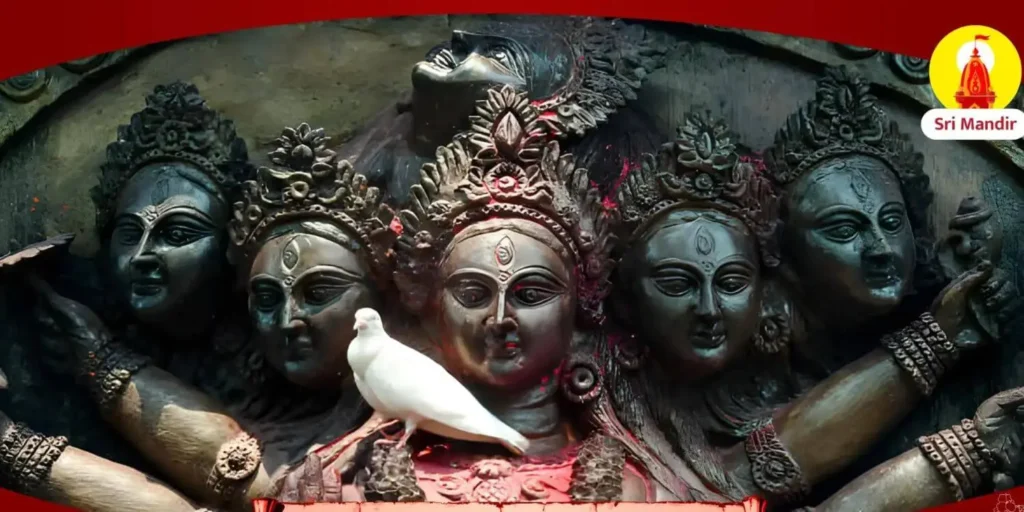Welcome to Nilachal Hill in Guwahati, Assam, the Kamakhya Temple with ancient traditions and mystical beliefs.
However, among its many rituals, the Kamakhya Temple blood phenomenon stands out, drawing the attention of devotees and scholars alike. This natural occurrence during the Ambubachi Mela, where the Brahmaputra River near the temple turns red, resembling kamakhya temple menstruation blood, sparks curiosity and wonder.
Further, as pilgrims flock to witness this event, it prompts exploration into its deeper meanings and scientific explanations.
1. The Legend

Hindu mythology deeply intertwines with the Kamakhya Temple, specifically linking to the legends of Goddess Sati and Lord Shiva. According to the myth, the temple stands where Sati’s reproductive organs landed during Lord Shiva’s Tandava dance of destruction.
However, this legend establishes the temple as one of the 51 Shakti Peethas, representing the divine feminine power. Whether, the tale of sacrifice, devotion, and divine intervention imbues the temple with a sacred aura, attracting pilgrims seeking blessings and fulfillment.
2. The Phenomenon
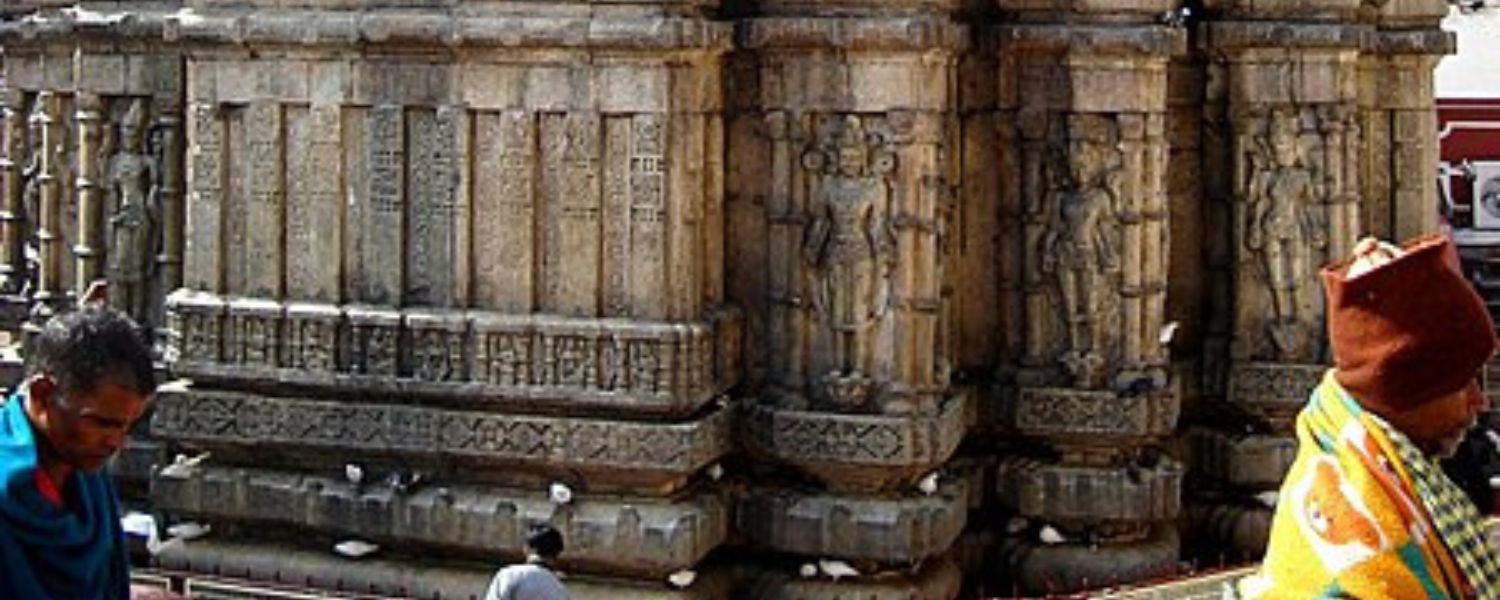
However, the phenomenon of the river Kamakhya Temple blood is a remarkable occurrence that occurs annually during the Ambubachi Mela, a religious festival held at the Kamakhya Temple in Assam, India.
Additionally, during this event, devotees and visitors witness the Brahmaputra River near the temple turning a vivid shade of red, resembling menstrual blood. This natural phenomenon has garnered widespread attention and intrigue, captivating religious pilgrims and scientific researchers, and you get to know about Assam traditional food name.
The sight of the red waters holds deep symbolic significance in Hindu mythology. At the Kamakhya temple story, menstruation, often deemed taboo in many cultures, celebrates as a symbol of fertility and the creative force of the Goddess Kamakhya.
Furthermore, the river’s reddish hue interprets as a divine manifestation, symbolizing the Goddess’s power to create and nurture life. It signifies the cyclical nature of existence, where death follows by rebirth, and endings yield to new beginnings.
One theory suggests that the water’s reddish tint could be due to iron oxide deposits in the riverbed, which become stirred up during the monsoon season, giving the water its distinctive color. Another hypothesis proposes the presence of certain algae or bacteria that thrive in the river under specific environmental conditions, contributing to discoloration.
Regardless of the scientific explanations, the phenomenon inspires awe and wonder among devotees and researchers alike. It is a testament to the enduring power of myth and symbolism in shaping human beliefs and experiences.
As pilgrims gather to witness the annual transformation of the river into a sea of red, they remember the sacred mysteries and divine presence that permeate the Kamakhya Temple, enriching their spiritual journey and deepening their connection to the Goddess Kamakhya.
3. Symbolism and Significance
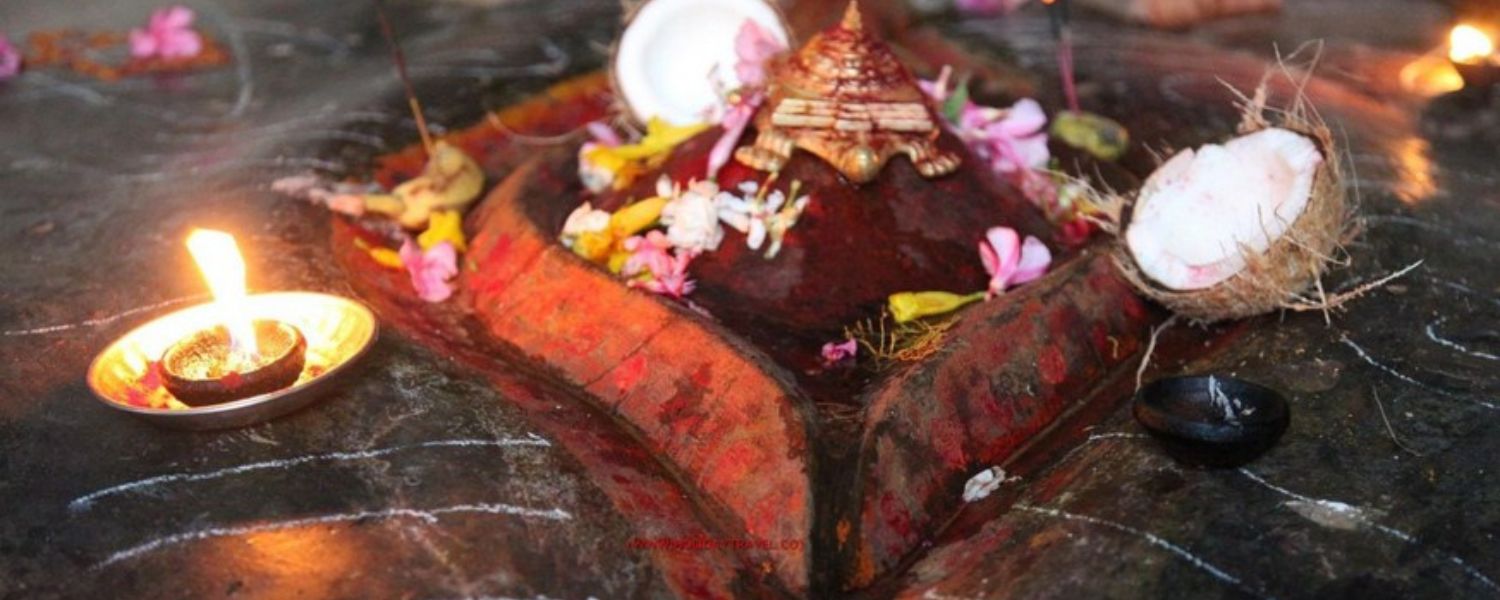
Hindu mythology, cultural traditions, and spiritual beliefs deeply root the symbolism and significance of the river Kamakhya Temple blood phenomenon at the Kamakhya temple in Assam.
This natural occurrence, where the waters of the Brahmaputra River near the temple turn red, resembling menstrual blood, holds profound meaning for devotees and visitors alike.
Central to the symbolism is honoring menstruation as a representation of fertility and the creative essence of the divine feminine. In many cultures, menstruation is stigmatized or deemed impure, but at the Kamakhya Temple, it is revered as sacred and auspicious.
The reddish hue of the river reflects the Goddess Kamakhya’s fertility and life-giving energy. It symbolizes the cyclical nature of existence, intertwining death and rebirth, and ensuring the continuity of life through the divine feminine principle.
Furthermore, the river Kamakhya Temple blood phenomenon is a powerful reminder of the interconnectedness of all life forms and the natural world. It underscores the sanctity of water as a life-giving element and the source of all creation. Many believe that the red waters possess purifying and healing properties, symbolizing the cleansing and renewal of the soul.
At a broader cultural level, this phenomenon cultivates a profound sense of community and unity among devotees congregating at the Kamakhya Temple to partake in this sacred spectacle. It reinforces their faith in the Goddess Kamakhya and her benevolence, inspiring devotion, gratitude, and reverence.
The symbolism and significance of the river Kamakhya Temple blood phenomenon deeply root in religious and cultural traditions, inviting contemplation and reflection on life’s profound mysteries and the cosmos.
As pilgrims and researchers continue to explore the meaning and origins of this phenomenon, they recall the wisdom and profound insights embedded in the sacred traditions of the Kamakhya Temple.
4. Devotional Practices
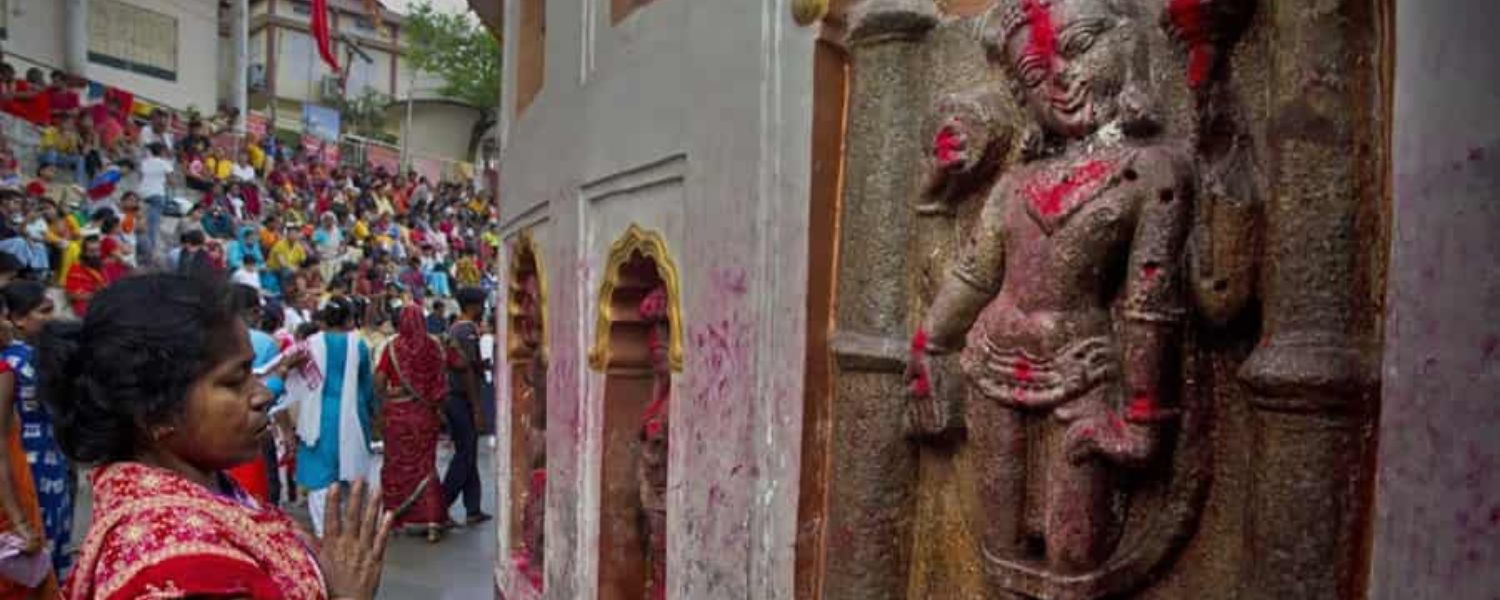
Devotional practices at the Kamakhya Temple encompass a diverse array of rituals, ceremonies, and acts of worship that devotees engage in to seek the blessings of the Goddess Kamakhya. These practices are deeply rooted in Hindu mythology, tantric traditions, and cultural customs, and they play a central role in the spiritual lives of pilgrims who visit the temple.
One of the most common devotional practices at the Temple is the performance of rituals and ceremonies. Devotees offer prayers, chant mantras, and recite hymns praising the Goddess Kamakhya.
They perform elaborate puja ceremonies, which show the deity flowers, fruits, incense, and other symbolic items. These rituals are conducted by priests and pujaris who are trained in the intricacies of Hindu worship and tradition.
Another significant aspect of devotional practices at the Kamakhya Temple is offering bhog or prasad to the Goddess. Devotees bring offerings of sweets, fruits, and other food items consecrated and distributed as blessings from the deity.
During the annual Ambubachi Mela, a religious festival held at the Temple, devotional practices reach a crescendo as thousands of pilgrims gather to participate in various rituals and ceremonies.
Sadhus and priests perform tantric rituals, invoking the divine feminine energy of Kamakhya and seeking her blessings for spiritual enlightenment and fulfillment of desires. The festival also allows devotees to engage in acts of seva or selfless service, such as distributing food, offering assistance to fellow pilgrims, and contributing to the upkeep of the temple premises.
Overall, devotional practices at the Kamakhya Temple are characterized by deep reverence, devotion, and surrender to the divine. They provide devotees a sacred space to connect with the Goddess Kamakhya, seek her blessings, and deepen their spiritual journey of devotion and self-realization.
5. Scientific Explanations
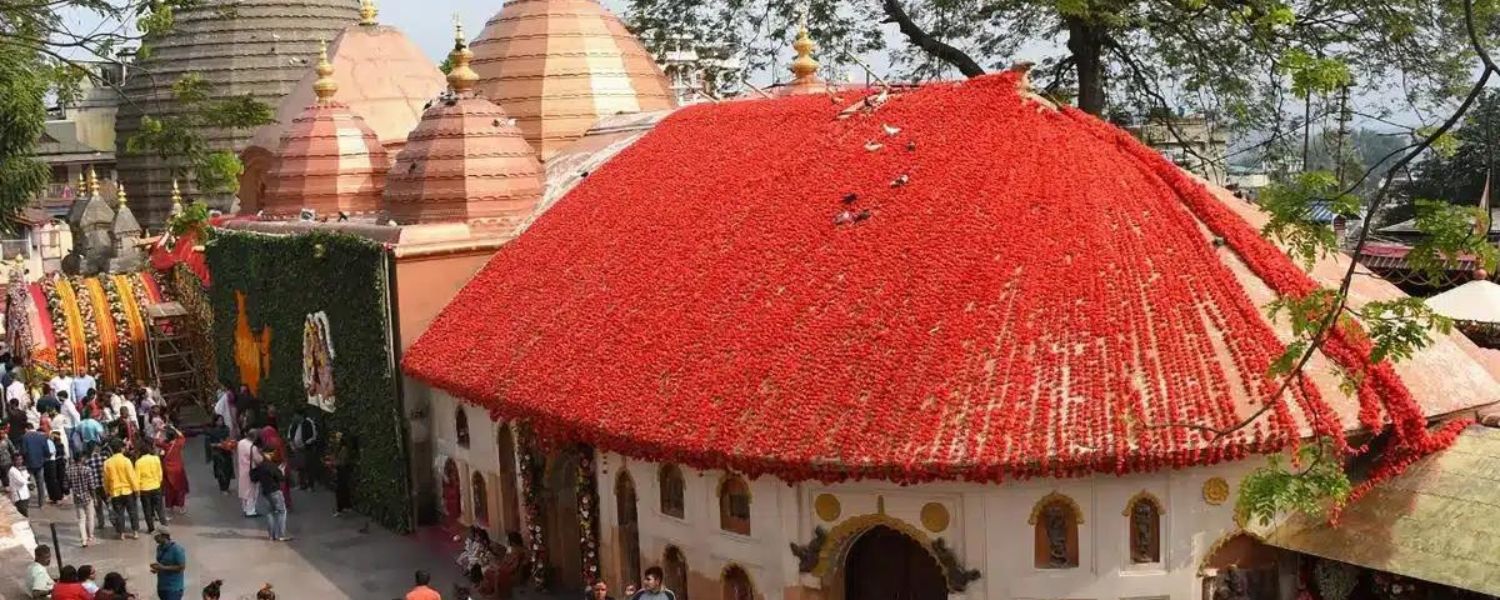
While rooted in religious beliefs, the river Kamakhya Temple blood phenomenon has also attracted scientific inquiry. One explanation suggests that the reddish tint of the water is due to iron oxide deposits in the Brahmaputra River bed, stirred up during the monsoon season.
Another theory proposes the presence of specific algae or bacteria that thrive in the river under certain environmental conditions, contributing to discoloration. These scientific explanations offer insights into the phenomenon’s natural processes, enriching our understanding of the intersection between faith and science.
Conclusion
The Kamakhya Temple, with its rich history, sacred rituals, and mystical phenomena, continues to captivate the hearts and minds of millions. The river Kamakhya Temple blood phenomenon, rooted in myth yet subject to scientific inquiry, exemplifies the complex interplay between spirituality and rationality.
As pilgrims gather to seek blessings and witness divine manifestations, the temple remains a kamakhya temple timings symbol of devotion and cultural heritage. Additionally, in its mysteries and marvels, the beckons explorers, scholars, and seekers inviting them to delve deeper into its secrets and significance for future generations.
FAQ
Q: What is Kamakhya Temple?
A: Kamakhya Temple is a renowned Hindu temple atop the Nilachal Hill in Guwahati, Assam, India. It is dedicated to the Goddess Kamakhya, a form of Devi, the mother goddess.
Q: What makes Kamakhya Temple significant?
A: Kamakhya Temple holds immense significance in Hindu mythology and spirituality. It is one of the most revered Shakti Peethas, believed to be the place where the genitalia of the Goddess Sati fell when Lord Shiva carried her body across the heavens. It symbolizes the creative energy of the universe.
Q: What is the architecture of Kamakhya Temple like?
A: The architecture of Kamakhya Temple is distinctively Assamese, characterized by its unique dome-like structure and intricate carvings. The temple complex comprises several smaller shrines dedicated to various Hindu deities.
Q: What rituals are performed at Kamakhya Temple?
A: However, the temple is a site for various rituals and ceremonies, particularly those associated with worshiping the Goddess Kamakhya. Devotees offer prayers, perform aarti (rituals involving light), and seek blessings for prosperity, fertility, and spiritual fulfillment.
